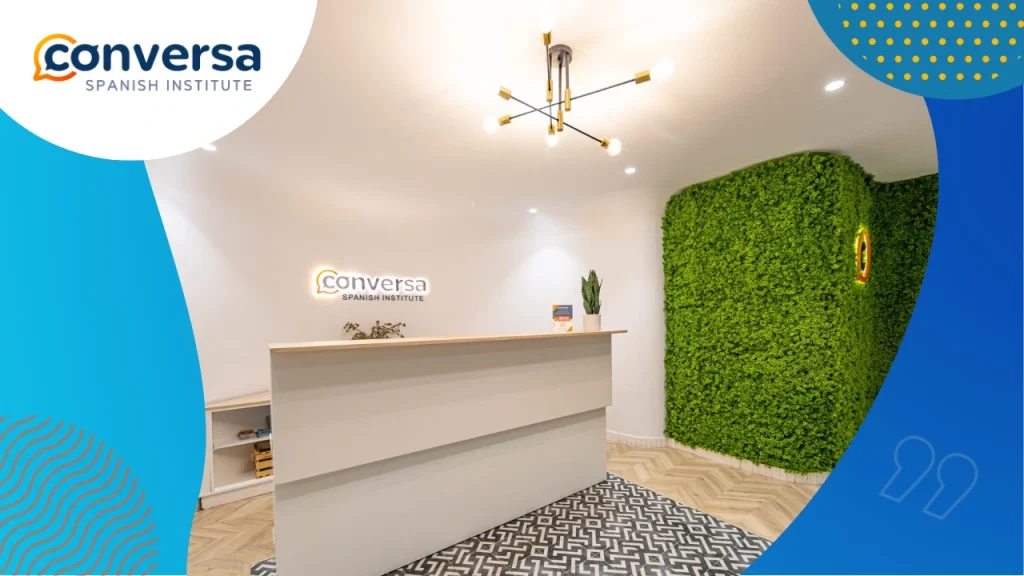- [email protected]
- +34 961258767
- Av. del Marqués de Sotelo 3, Piano 2, Porta 4, 46002 Valencia
Centro accreditato dall'Instituto Cervantes
Centro accreditato dall'Instituto Cervantes

Choosing the right Spanish course can make or break your learning experience. With so many programs, levels, and formats out there, it’s easy to feel overwhelmed — especially if you’re planning to study Spanish in Spain. This guide breaks down how to choose the right Spanish course based on your level, schedule, and learning goals, so you can make the most of your time and money.
Before enrolling in any course, it’s essential to know where you stand. Most Scuole di spagnolo in Spagna assess students using the Common European Framework of Reference (CEFR).
Here’s how levels typically break down:
Tip: Even if you’ve studied Spanish before, take a placement test. It ensures you join a class that challenges you without leaving you behind.
When choosing Spanish classes, think about perché you want to learn. Your motivation should guide your course type.
Go for an Corso intensivo di spagnolo.
These programs usually run 15–25 hours per week and immerse you in Spanish daily — perfect for short-term learners, travelers, or digital nomads.
A Long-Term Spanish Course is your best bet.
You’ll progress at a steady pace, have time to digest new grammar, and gain real-world fluency. This is ideal if you’re studying abroad or living in Spain for several months.
Look into Spanish for Schools and University Groups.
These programs combine classroom instruction with cultural activities like cooking classes, tours, or workshops — making learning both social and immersive.
For more insight into how cultural experiences help you learn faster, check out Come le attività culturali migliorano l'esperienza di apprendimento dello spagnolo.

Not everyone learns best in the same setting. Your ideal course should fit your schedule and your energy.
Suggerimento: Consistency beats intensity. A steady 3 hours a week often produces better results than cramming 10 hours once a month.
The most effective Spanish learning happens outside the classroom.
Choose a school that gives you opportunities to practice Spanish daily — through local events, meetups, or excursions.
Valencia, for example, is a great city for immersion: affordable, student-friendly, and full of opportunities to live in Spanish every day.
If you’re curious about what life and study look like there, this practical guide to learning Spanish in Valencia breaks down what to expect and why it’s one of Spain’s most popular study destinations.

When comparing Spanish programs, don’t just focus on price.
Look for accredited Spanish schools — ideally those recognized by the Istituto Cervantes, the gold standard for Spanish teaching quality.
Accreditation means the school follows structured syllabi, uses qualified native teachers, and offers consistent quality.
Also, pay attention to the teaching philosophy:
Smaller groups and a communication-first approach are ideal for improving speaking confidence quickly.
Lo sapevi che Conversa Spanish Institute is an accredited Spanish school in the heart of Valencia?
Do you want to:
Your answer should determine the duration and intensity del tuo corso.
For instance, DELE-focused learners benefit from long-term or private programs, while casual learners might prefer short intensive stays.
For real-life insights, check out Com'è studiare lo spagnolo in Spagna: Guida pratica per studenti internazionali
Choosing the right Spanish course isn’t just about ticking boxes — it’s about finding the perfect mix of learning style, lifestyle, and motivation.
If you’re serious about improving your Spanish while enjoying Mediterranean life, Valencia is a strong choice — and schools like Conversa Spanish Institute make it easy to tailor your experience to your level, schedule, and goals.
Whether you’re a beginner or advanced student, take your time, ask questions, and remember: the best Spanish course is the one that keeps you motivated to speak, practice, and grow.
| Cookie | Duración | Descripción |
|---|---|---|
| cookielawinfo-checkbox-analytics | 11 mesi | Questo cookie è impostato dal plugin GDPR Cookie Consent. Il cookie viene utilizzato per memorizzare il consenso dell'utente per i cookie della categoria "Analytics". |
| cookielawinfo-checkbox-funzionale | 11 mesi | Il cookie è impostato dal GDPR cookie consent per registrare il consenso dell'utente per i cookie della categoria "Funzionali". |
| cookielawinfo-checkbox-necessario | 11 mesi | Questo cookie è impostato dal plugin GDPR Cookie Consent. Il cookie viene utilizzato per memorizzare il consenso dell'utente per i cookie della categoria "Necessario". |
| cookielawinfo-checkbox-altri | 11 mesi | Questo cookie è impostato dal plugin GDPR Cookie Consent. Il cookie viene utilizzato per memorizzare il consenso dell'utente per i cookie della categoria "Altro". |
| cookielawinfo-checkbox-prestazioni | 11 mesi | Questo cookie è impostato dal plugin GDPR Cookie Consent. Il cookie viene utilizzato per memorizzare il consenso dell'utente per i cookie della categoria "Performance". |
| politica_cookie_vista | 11 mesi | Il cookie è impostato dal plugin GDPR Cookie Consent ed è utilizzato per memorizzare se l'utente ha acconsentito o meno all'uso dei cookie. Non memorizza alcun dato personale. |
Compila il modulo sottostante e il nostro team di ammissione ti risponderà entro 24-48 ore.